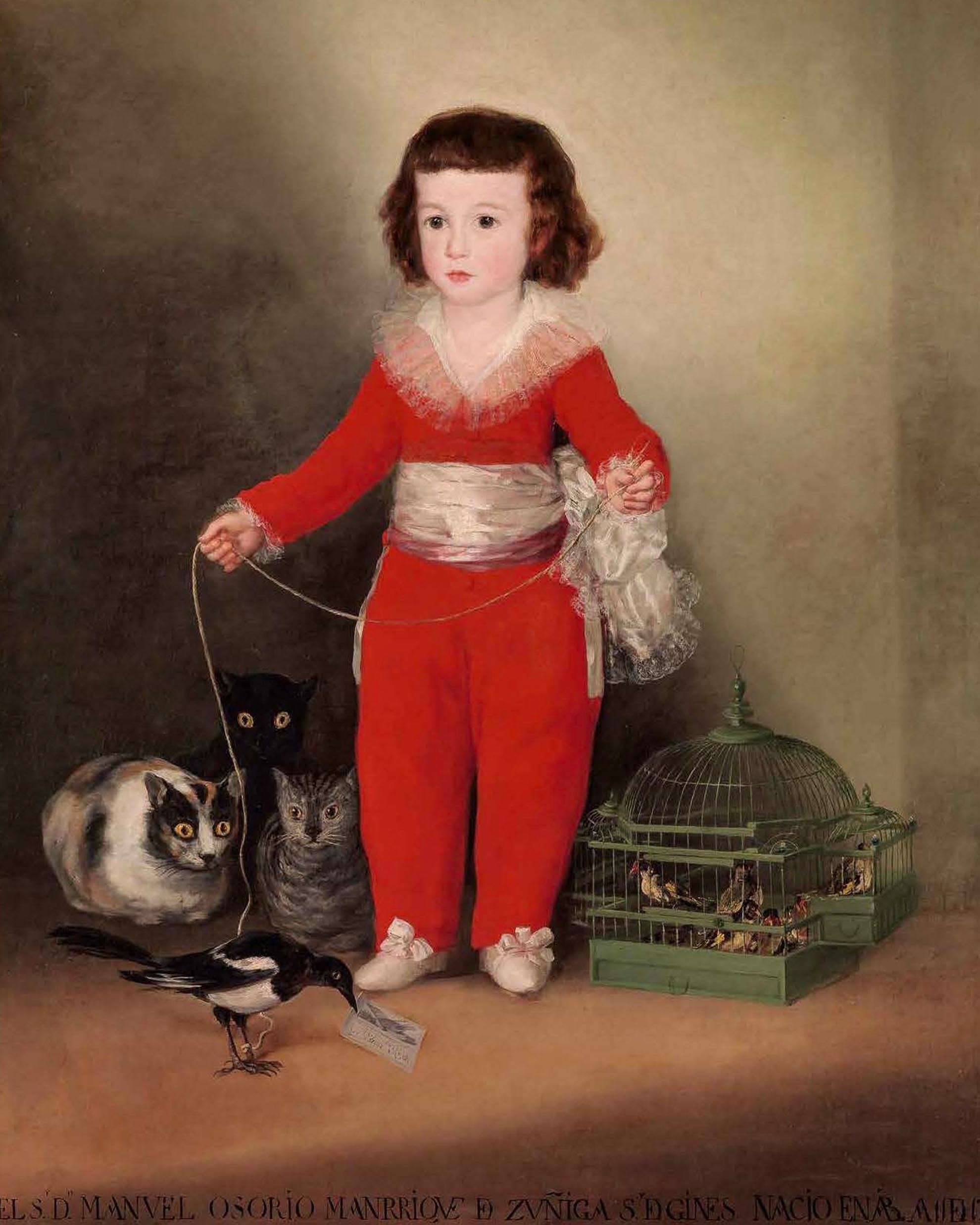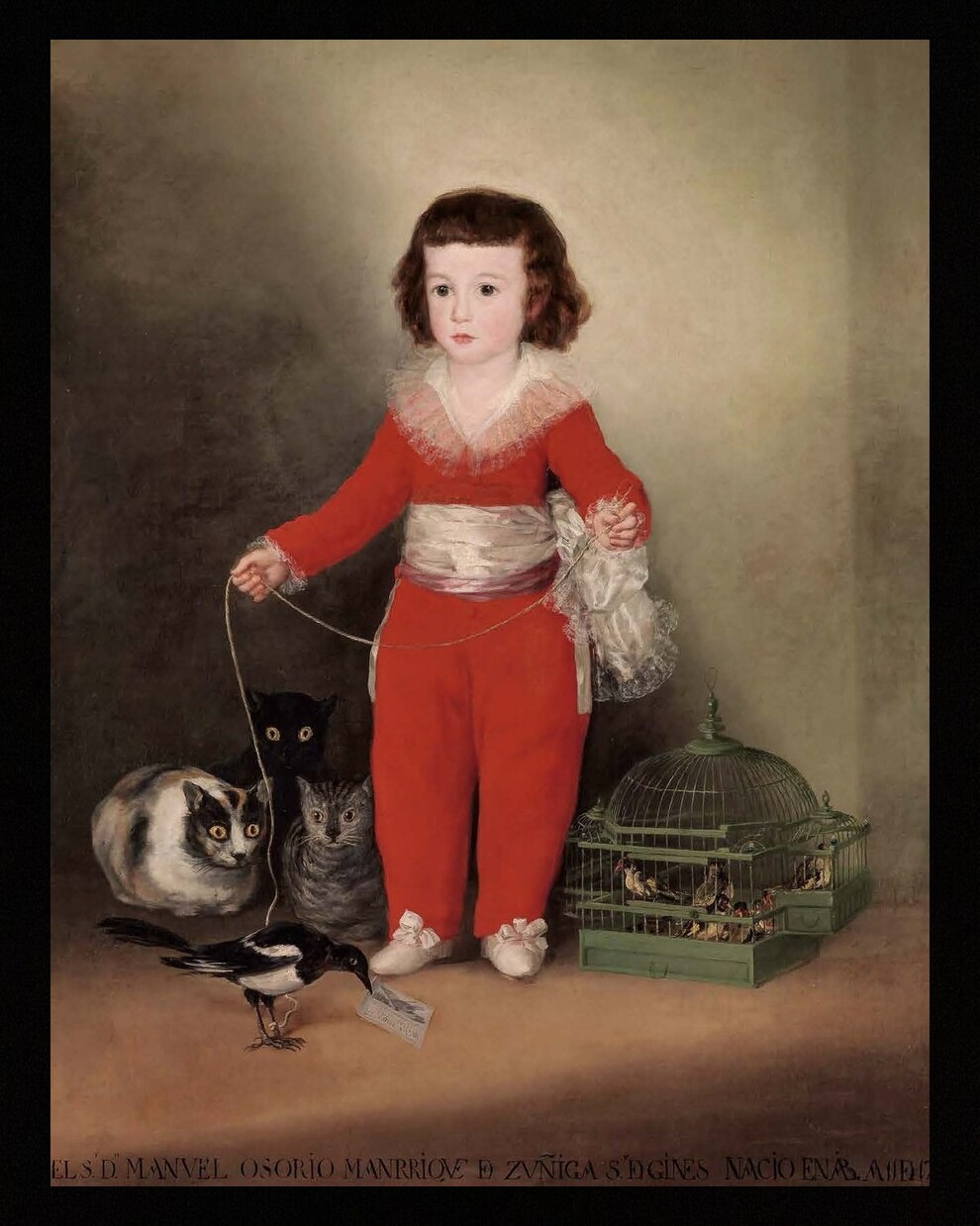
Goya’s portrait of Manuel Osorio Manrique de Zúñiga, displayed in the Metropolitan Museum one room over from the Paninis, is one such painting. It is a medium sized canvas measuring 127 x 101.6 cm. Whenever he visits the Metropolitan Museum, there are so many different things to happily occupy Mr. PA’s mind that sometimes his feet will carry him towards this painting of their own accord. Every time he looks up at it, Mr. PA feels happy to be alive.
Mr. PA can’t even remember the first time he saw a copy of this famous work. It would have been a long time ago, a black and white reproduction, perhaps. Unlike the Paninis, this portrait of a cute and pensive four-year-old aristocratic boy (with a touch of melancholy at the corners of his mouth) carries a trace of magic, a power to surprise, a kind of strangeness that Mr. PA has rarely observed in other paintings. Whenever he comes to the museum, Mr. PA makes sure to go and stand, however briefly, before this painting, and every time he comes face to face with Manuel Osorio, he finds himself wondering whether the happiness and the joie de vivre he feels in the portrait’s presence are generated by its own strangeness and its magic, or whether they result instead from the tenderness and affection he carries for the boy in the red costume. As well as all these emotions, every time he looks up at this magnificent painting Mr. PA can also feel the overwhelming power of the color red.
Little Don Manuel Osorio’s elegant costume is such a dazzling red! Mr. PA knows from listening to other visitors’ conversations and from his reading on the subject that everyone who loves this unforgettable painting (and there are a great many who do) tends to remember it first and foremost by that red. Mr. PA is intrigued enough by the color red to have written a whole book about it, a book in which he has devoted page after page to the powerful use of the color red across various works of Iranian and Ottoman art, and even to what it might feel like to be the color red – including several sections narrated in the first person and from the point of view of the color itself.
As Mr. PA knows, the feelings summoned by the color will mingle in the visitor’s mind with the dramatic, enigmatic emotions evoked by the inner logic of the painting and by the interplay between the various figures it depicts. That is what you call making the most of color! Yet those who argue that it is precisely this use of the color red that makes this painting so memorable are only partly correct. Not all paintings dominated by red are capable of carving themselves such a permanent place in our minds. In fact Mr. PA thinks it a little cheap when artists rely too much on red to make their work stand out.
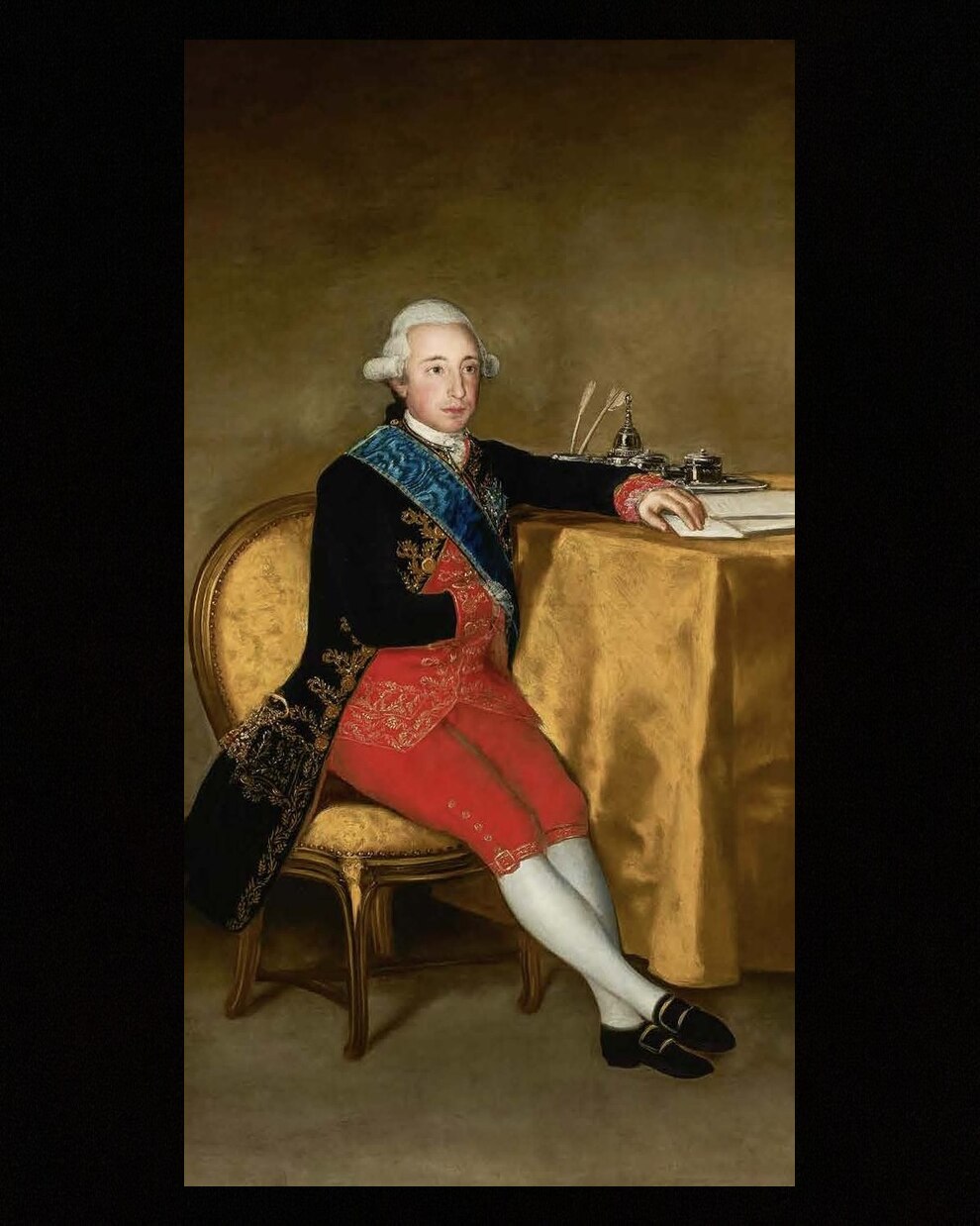
While it is crucial to note that in this painting, the color red fully achieves its purpose, it is equally important to point out that whoever dressed Manuel Osorio – his mother, perhaps? – to pose for Goya clearly made an excellent choice of outfit. After all, it is thanks to his attire that the little boy has entered the ranks of the immortals (a somewhat exaggerated designation). But whenever Mr. PA tries to picture the day Don Manuel posed for a young Goya (who was but 40 at the time), he is quickly gripped by a sense of sorrow. For he knows that sweet little Don Manuel died just four years after the completion of this portrait. That is why he feels such a surge of tenderness for the boy every time he approaches the painting. Looking at the portrait of a dead king or general is not the same as looking at the portrait of a child who died aged eight (1784-1792). Such a portrait carries within it a heartache for a life never lived. Portraits of kings or generals, on the other hand, usually depict a moment of triumph, of glory, an image of authority. When he looks at paintings that people from the past commissioned as a way of demonstrating how important they were, Mr. PA never feels sorry that they died.
But whenever he remembers that little Don Manuel Osorio was still a child – only eight years old – when he passed away, he feels guilty to still be alive at seventy, wandering around museum galleries in search of some kind of meaning to his life.
In his early enchanting encounters with the little boy, the cats, and the magpie, Mr. PA had come away feeling curious and full of life (rather than melancholy). But once he found out that the boy in the portrait had died, many of the emotions the painting had initially aroused in him were soon transformed.
Surely this proves that a painting’s effect on us is liable to change as we learn more about it and about how it came to be made? That is why Mr. PA firmly believes that the descriptive texts and labels that are commonly found in museums beside or underneath each display should be as long and detailed as possible. He reads these labels diligently – once before he has even looked at the painting they describe, and once again after he has had time to study their subject.
He will often also take photographs of the labels (and of the paintings too – assuming, of course, that photography is allowed) with his digital camera, so that he can read them all again at home. These later re-readings help to better establish the paintings in his memory. As Horace said, words and images all serve the same purpose. Even so, some thoughtless individuals still like to argue that there is no need for the long texts and informative labels we find hanging on museum walls. They believe that paintings should speak for themselves. “What need is there for words? Just look at the painting and feel its beauty!” they say. Unfortunately what these people do not seem to realize is that the meaning (if not the beauty) of a painting comes precisely from its story. As Mr. PA often points out in his classes, there can be no picture without a story and without text (with the sole exception, he occasionally remembers to add, of landscape painting). Mr. PA always awards the highest grades to those among his students who take the time to properly research a painting and connect the information they have found with the sensations that the painting has evoked in them.
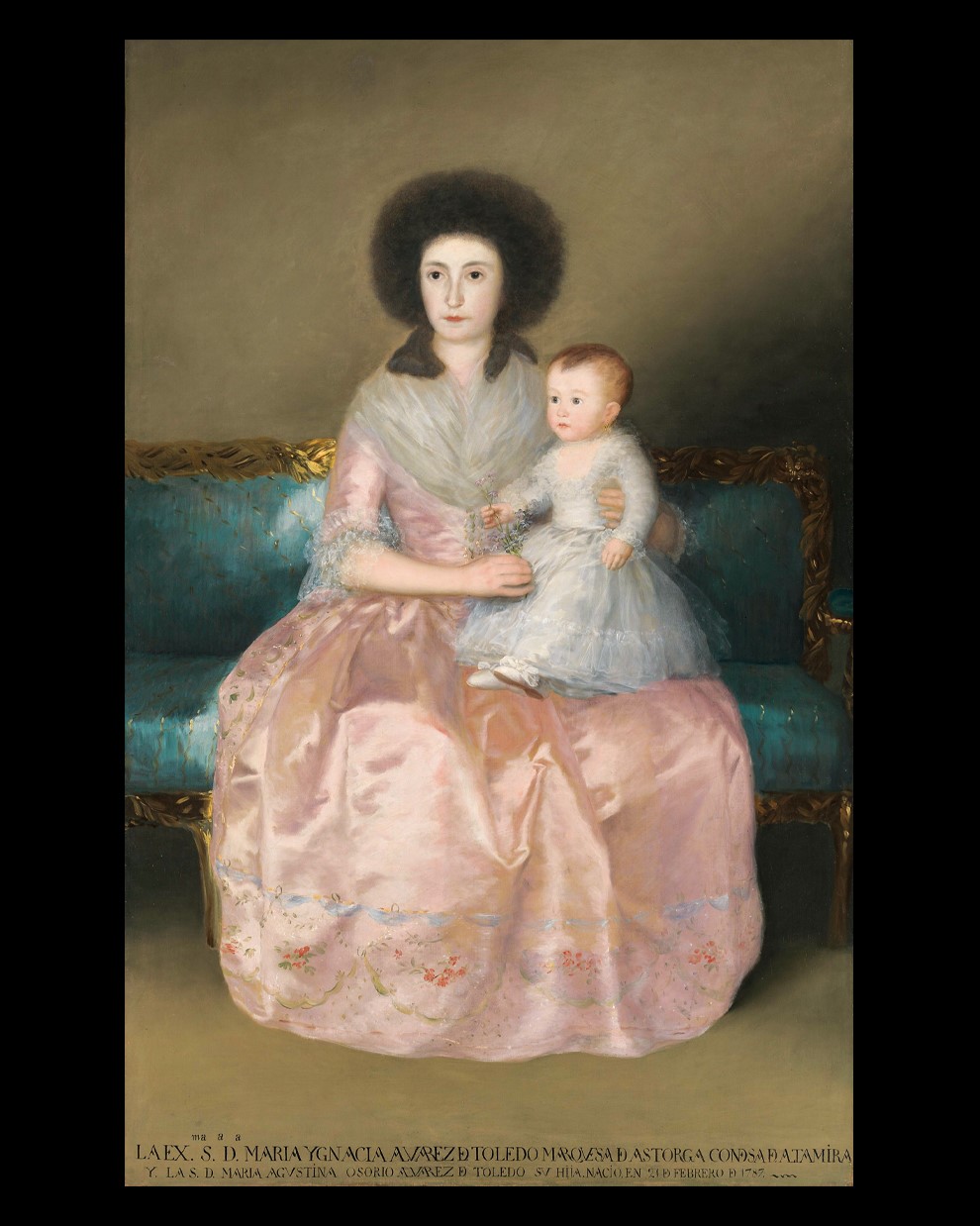
As he spends six or seven minutes standing before Goya’s painting (periodically shifting his weight from one leg to the other, adjusting his posture to avert a backache, and thinking why don’t they put a bench or a chair here too?), Mr. PA will find himself thinking, just like his best students, about all the things he has learned during his lengthy research into this painting. As well as Manuel Osorio with his red costume and silver sash, Goya painted the boy’s father, Vicente Joaquín. He also painted his dark-haired mother with the boy’s sister on her lap, and his older brother, born in and seven years his senior. In painting Don Manuel’s older brother, Goya sought to draw out the resemblance with his subject’s diminutive, almost dwarf-like, father. 15-year-old Vicente Osorio’s clothes, his posture, his hair, his demeanor, the way he tucks his hand into his waistcoat, all echo Goya’s painting of the boy’s father. In other words, Goya chose to portray Manuel’s older brother just as he would their father, the powerful Count Vicente Joaquín Osorio – almost as if he were a miniature grown-up. After all, the eldest child embodies those aristocratic titles, that sense of continuity and of societal duty that his father also represents.
The young count’s demeanor, as striking as his father’s, lends the portrait such a serious air that Goya eventually introduced a more childlike note by adding a cute white dog to the finished portrait. With its front paws resting on his master’s leg, this adorable little dog is the only carefree element of the painting. Mr. PA had been looking at a reproduction of this painting in a book one day when he realized that the cuteness of this particular dog must have been deliberate, given that most household pets in Goya’s paintings are rather unsightly.
It seems to Mr. PA that there is something peculiar, perhaps even “fateful,” in the way Goya’s portraits of these various members of the same family came to be scattered all over the world. The portrait of the Altamira patriarch, for example, remains in Madrid, in the Bank of Spain, where he was a director. The portrait of the Altamira countess with her daughter sitting on her lap is in New York’s Metropolitan Museum, just like the portrait of her younger son Manuel Osorio in his red costume, before which Mr. PA is standing now. But as the portrait of the mother and daughter is part of the Robert Lehman Collection, it hangs in another corner of the museum, on another floor. Mr. PA’s brow furrows whenever he thinks of how the whims of museum benefactors can end up separating a mother and her son two hundred and fifty years after they lived. Yet he also recognizes that the true reason for their separation lies in the sheer power of the portrait of Manuel Osorio in his red costume.
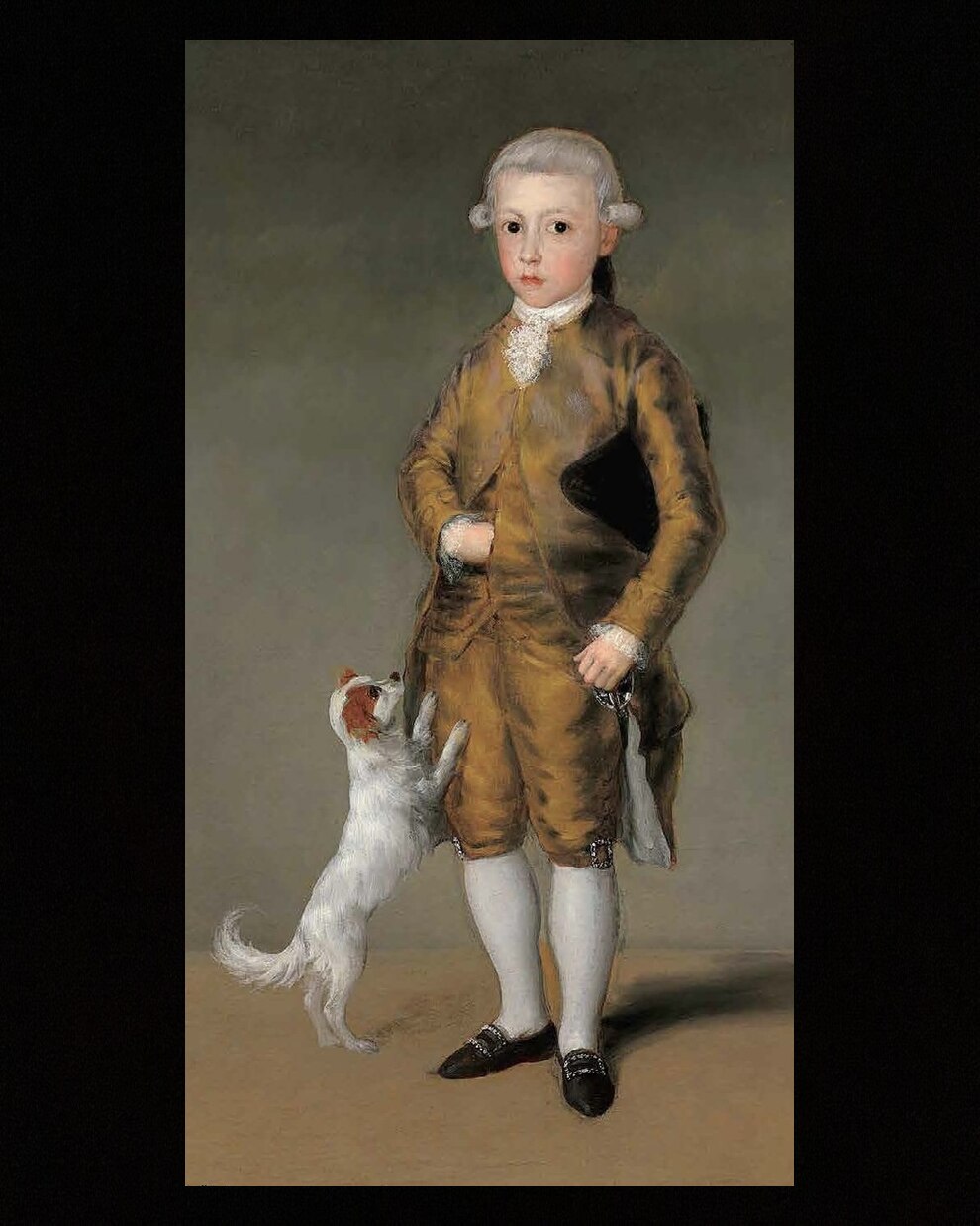
This power rests in Goya’s decision to depict the cute little boy not as a grown-up count in miniature, but as an actual child. In painting his most famous portrait, Goya sought to emphasize the boy’s childlike nature, choosing to immortalize him with his magpie friend – clearly a regular playmate. From listening to other visitors’ conversations, Mr. PA knows that after the redness of the boy’s outfit, it is this pet magpie which most arouses people’s interest. Mr. PA enjoys eavesdropping on people’s conversations while they are looking at paintings in museums. Even when they seem to be distressingly ill-informed, or more interested in their own trivial preoccupations than in the art they are observing, he still likes to listen in. Not knowing much on the subject of children’s toys and household pets among the 18th century Spanish aristocracy, Mr. Pa suspects that his own thoughts and perceptions on what it must be like for such a young child to hold a magpie on a leash, as if it were a dog, are most probably inaccurate too, but he deals with this situation by “suspending his disbelief,” just as readers of “fantasy” literature must do in order for the genre to work.
What Mr. PA can never truly believe is that, with a magpie just inches away from their faces, the three cats in the painting (less attentive observers often fail to notice the black cat at the back and think – and even write, sometimes – that there are only two) would ever sit as calmly as they seem to be doing. Any cat would be sure to attack a bird standing so nearby. Goya must have immortalized the moment immediately preceding such an attack. We are in the calm before the storm, when everyone is waiting for something. Choosing such a moment imbues the painting with the feeling that time has stopped. The use of shadows and the cats’ yellow eyes heighten the sense of tension.
Another detail that renders this painting so unforgettable is that, in common with many other works by Goya, there is something disturbing and demonic about the pets depicted therein. The cats seem neither friendly nor particularly cute. Mr. PA respects Goya for portraying them not as amiable creatures to be taken onto one’s lap and petted, but as menacing, malevolent beings waiting to pounce on the magpie. This is another reason why Mr. PA (like many others) is so drawn to this painting. He admires the fact that Goya did not attempt to make the cats seem more endearing than they were, just as he did not go out of his way to depict the aristocracy in an unduly flattering light.
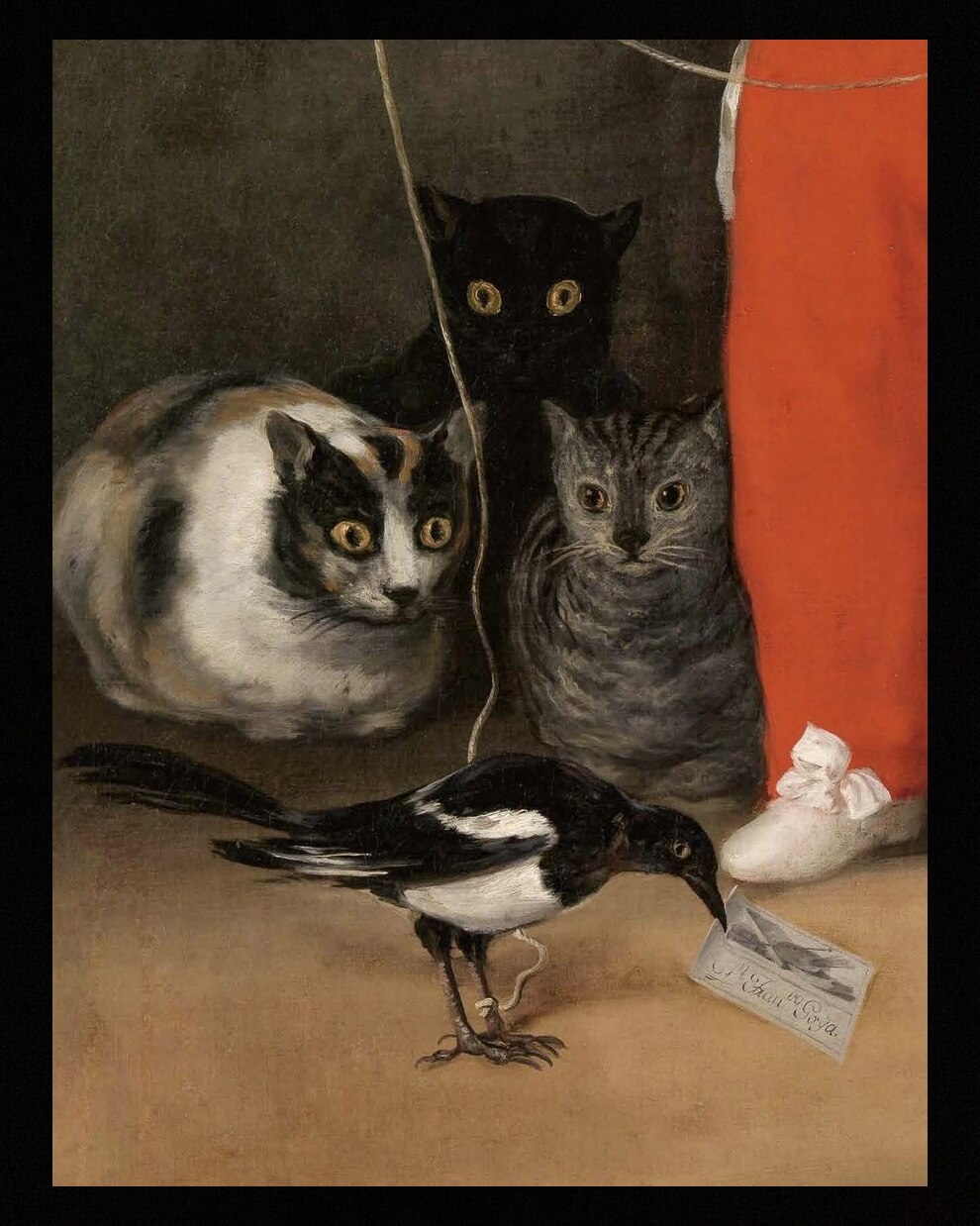
As a child, Mr. PA used to have a cat that he loved very much. But when the cat eventually died – just like the boy in the red costume – Mr. PA was bereft, and the subject of cats has felt particularly important and personal to him ever since. Mr. PA believes that cats will only subdue their aggressive instincts – as in this painting – if they have been frightened into submission. Whenever he used to harass his beloved cat to stop him from doing something forbidden, the kitty would hide under a chair in fear, molding himself into the shape of a ball and biding his time, just like the two cats in the foreground of Goya’s painting. Hence, whenever Mr. PA goes home and thinks back to this painting, he always pictures the three magpie-stalking cats as if they were huddled under a chair – thereby proving once again that no matter how much time he spends perusing the works of art exhibited in a museum, there will always be some inaccuracy or difference in how he remembers them.
The demonic expression in the three cats’ eyes, which lends the painting its overarching aura, comes both from their focus on the magpie, and from their yellow hue. Mr. Pa suspects that once they are done with the magpie, the cats will move on to the cage on the opposite side and to the finches therein. Yet the boy with the red costume seems unaware of these impending catastrophes, just as he is unaware that he is destined to die only a few years after posing for this portrait. The thought moves Mr. PA. Something about the boy reminds him of a nobleman oblivious to the bloody rebellions, the wars, the revolutions on the horizon. Mr. PA relishes the innocence, the indifference of the red-costumed boy.
Some art historians claim that Goya was commissioned to paint this portrait after the death of young Manuel Osorio, meaning that he would have had to paint it from memory and by using his imagination, rather than by looking at the child. Mr. PA dislikes this theory, and doesn’t believe it. The thought that Goya would have been looking at little Manuel while painting his portrait allows Mr. PA to imagine that the boy is now looking back out at him, or that they have perhaps run into each other in the halls of some Spanish palace.
But the most charming, most interesting characteristic of this painting is that the boy in the red costume is not actually looking at Goya, nor at Mr. PA – who is observing the boy now from the painter’s perspective. In fact everyone in this strange painting is looking somewhere else.
The finches in their cage are all facing in different directions (what might they be looking at?), the cats are watching the magpie, and the boy in the red costume is focused on something outside the frame. The painting thus becomes something larger than itself, something that reminds us of spaces and places beyond its confines. Mr. PA is sure that Goya, whom he admires so much, must have done this on purpose. For even the magpie depicted in the painting is looking at the card it is holding at the tip of its beak. This is a calling card bearing Goya’s signature. Mr. PA’s admiration for the painter is renewed, and he feels something close to wishing he could have painted this portrait himself. Upon completing it, he too would have liked to add a note at the bottom, in his own handwriting, explaining whose portrait it was. But realising that he has already devoted too much time to the painting on this visit, and that he is tired of standing, Mr. PA reads the text at the bottom of the canvas, and walks away.
EL Sr. Dn. MANVEL OSORIO MANRRIQVE DE ZVÑIGA Sr.DE GINES NACIO EN AB. A 11 DE 1784.
Orhan Pamuk
translation by Ekin Oklap
All the paintings are by Francisco de Goya y Lucientes (1746-1828).
